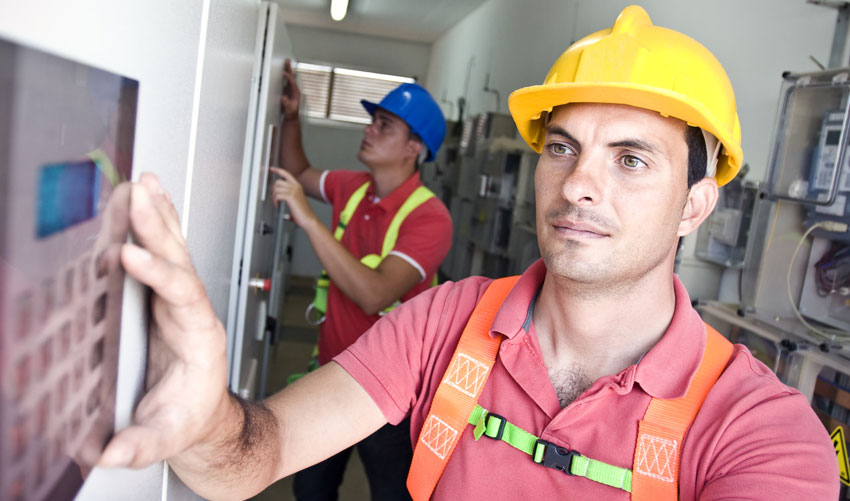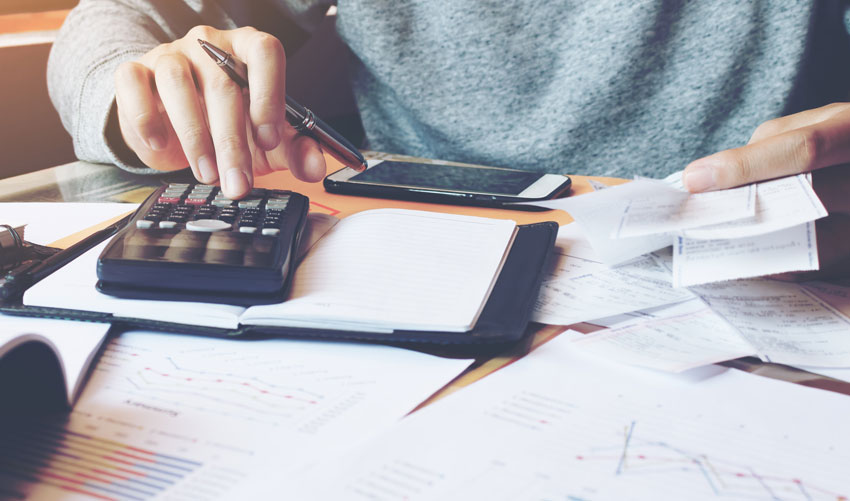The list of uses for solar power continues to grow year after year. But, one of the largest uses for solar, quite literally, is the RV. When you think about it, solar for RVs just makes sense. It gives you the ability to go anywhere you want without worrying about finding a power source.
Solar panels are so widely used now that you probably didn’t even notice how many RVs you have driven by that are equipped with them. They are easy to install, last long and can save you quite a lot of money. On top of this, they’re also environmentally friendly.
But how much solar power do you need for an RV? Well, there are a lot more factors that determine that than you may first think. But luckily, it is easy to understand.
First things first, there are a few things that you need to understand. The unit of measurement AH (amp-hours) is a formula that plays a big role in how many panels you need. The formula to find AH is:
kWh/volts= AH
By dividing kilowatts per hour by volts, you reach the number of amp-hours. If the AH rating level is low, the amount of power you need is also low. If it is high, however, you are going to need to put in more solar panels to get the power you need.
If your usage indicates that you need a minimum of 1,200 watts worth of solar panels, then that is what you need to get. As far as quantifiable numbers of panels themselves go, that is more so a matter of how much wattage each panel puts out.
If your 100-watt panel can output 30 AH after 5-10 hours of sunshine, you are in good shape. A 100-watt panel is par for the course when it comes to RVs and many people don’t need to go much higher than that. However, the number of solar panels you will need varies drastically based on your specific circumstances.
Placement
Where is the first place that pops into your head to put solar panels on an RV? If you immediately thought about the roof, you are not alone. In fact, that seems to be what everyone assumes. Rightfully so, considering it is directly underneath the sun’s rays.

It seems too good to be true almost. But there is a problem with that. In fact, solar panels mounted on the roof of an RV get much less sun than if mounted elsewhere. That is unless you angle them properly.
The problem that lies with putting solar panels on the roof of an RV is not in principle, it is in execution. Oftentimes, people don’t place the panels so that they are angled. Usually, panels need to be angled 90 degrees to get optimal sunlight.
In the case of RV solar panels, oftentimes people mount them flat unknowingly limiting the amount of sun that they get.
How Do You Get The Most Out of Your Rv’s Solar Panels?
There are a few things to do to get the most out of the panels, such as:
- Place them on the side plug
- Tilt them at 90 degrees on the roof
- Go idle for a while
Putting your solar panels on the side plug of the RV is a great way to use them. In some situations on the road, you may not get maximum sunlight, but when idle, it could come in handy. You could let it down and sit under the solar panels and get shade as it powers your RV or recharges your batteries.
Do you plan on boondocking? Boondocking is when you unhook and unplug from outside power and resources. Doing so when your RV is outfitted with solar panels is a different beast altogether. If your 100-watt panel can output 30 AH after 5-10 hours of sunshine you can boondock almost anywhere without worrying about finding your next source of power.
What Can I Power Up with Solar Panels on My RV?
Depending on the battery and the battery bank, you can power almost anything including:
- Mini fridge
- Lightbulbs
- Air conditioner
- TV
- Gaming console
Now, the list goes on and on, but note the variety in examples. Some of them require very little energy, while others, such as the air conditioner need more. The bigger the appliances and the more power that you use, the better the battery bank and higher capacity batteries you need.
An upgrade may be in order if you want to run a bunch of big appliances at once. Use solar panels between 100 and 106 watts or more and batteries that have a high capacity. You are going to need well over 1,000 watts to keep an air conditioner running and still have energy left over to keep the RV powered.
Which Type of Panels Should I Get?
When it comes to RVs at least, there are really only two kinds of panels that people commonly use: Flat panels and flexible panels.
Each of these two types of panels have their own unique advantages and disadvantages. As mentioned before, solar panels need to be at somewhat of a 90-degree angle in order to be in a perfect position to the sun. That is a little bit harder to attain with flat panels.
That doesn’t mean people don’t do it, however. In fact, it wasn’t until a couple of years ago there were even alternatives to it. Plus, you can angle your flat panels with a little bit of ingenuity. The only time it’s frustrating is when you are on the road and you know that panels are slowly going flat on their own which happens when the RV is rattled by the road.
Flexible panels, however, get rid of a lot of the guesswork and make the whole set up easier. They seem to hug the surface of the roof of the RV much easier and may even get more sunlight depending on who you ask. The main downside, however, is that they are more expensive than flat solar panels.
What Are Your Plans?
How many solar panels you need can greatly depend on your plans with your RV, among other factors, such as:
- The number of appliances in the RV
- AC usage
- Size of the RV
- Battery capacity
If you are going to be entertaining a lot of people, you will probably be consuming a lot more energy. At least more than if it were just you and one or two other people. Say for instance that the main use that you get out of the RV is family vacations.

In that scenario, you would have at least a handful of people in close quarters. That can get hot quickly which might require you to get that AC cranking. Not to mention all of the energy consumption that 3 or 4 more people can use. In that case, you may want up to 3000 watts worth of solar panels.
That may sound extreme, but there are many families that do exactly that. Now, if your RV is simpler and you don’t have very many appliances, get something that is enough to keep all the batteries charged at all times.
Whether you get several smaller capacity panels or just a few that are 1000 watts or more, you’ll want enough to do the job. The exact number of panels can change on the wattage per panel.
Does Material Matter?
You can find solar panels that are made out of several materials, such as:
- Amorphous silicon- flexible and thin, they are not as efficient as the alternatives.
- Monocrystalline – they are black and made out of silicon
- Polycrystalline- they are cheap and made out of melted silicon
But which one is the best for an RV? Monocrystalline may just be the best option. Either that or polycrystalline. Amorphous silicon solar panels can be great, and they are better than nothing, but they are far from being as effective as the other two.
Polycrystalline is less expensive than monocrystalline, but either one works well. As a matter of fact, there is no reason that you cannot use them together. You can easily add on two or even three different kinds of solar panels on your RV without running into any problems so long as you do the right calculations.
What Should You Keep in Mind?
Think about what kind of use you want to get out of your RV and figure out what kind of energy use it would entail. If you are going to be doing a lot of boondocking, you may want to consider placing solar panels on the ground.

You can easily put solar panels on the ground beside the RV if possible and get much more sun exposure than with it being on the roof. As mentioned above, the roof is simply not as great of a place to put solar panels as it seems at first glance.
With that said, you can always tilt them when possible or go with flexible panels when they fit well with your roof.
How many solar panels you need for your RV depends entirely on your specific energy needs. Calculate how much energy you need and get a combination of panels that give you the right amount of wattage. If you need 3000 watts, it could be six 500 watt panels or three 1000 watt panels. The options are nearly endless.




